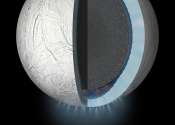Rocks show Mars once felt like Iceland
Once upon a time, seasons in Gale Crater probably felt something like those in Iceland. But nobody was there to bundle up more than 3 billion years ago.

Once upon a time, seasons in Gale Crater probably felt something like those in Iceland. But nobody was there to bundle up more than 3 billion years ago.
Astronomy
Jan 21, 2021
2
139

The Gulf of Mexico holds huge untapped offshore oil deposits that could help power the U.S. for decades.
Earth Sciences
Jan 15, 2021
16
904

Geoscientists have long known that some parts of the continents formed in the Earth's deep past, but the speed in which land rose above global seas—and the exact shapes that land masses formed—have so far eluded experts.
Earth Sciences
Dec 1, 2020
4
314

Stonehenge, a Neolithic wonder in southern England, has vexed historians and archaeologists for centuries with its many mysteries: How was it built? What purpose did it serve? Where did its towering sandstone boulders come ...
Archaeology
Jul 29, 2020
3
6938

Mars may now be considered a barren, icy desert but did Earth's nearest neighbour once harbour life?
Space Exploration
Jul 11, 2020
38
1294

Researchers have spent decades looking for evidence of ancient water on Mars. As technology has progressed, more evidence has come to light that rivers, lakes and even oceans were once abundant on the red planet.
Astronomy
May 6, 2020
53
8656

In the aftermath of the devastating Tohoku-Oki earthquake that struck off the coast of Japan in March 2011, seismologists were stunned by the unprecedented 50 meters of shallow displacement along the fault, which ruptured ...
Earth Sciences
Jan 27, 2020
0
234

A Southwest Research Institute team developed a new geochemical model that reveals that carbon dioxide (CO2) from within Enceladus, an ocean-harboring moon of Saturn, may be controlled by chemical reactions at its seafloor. ...
Space Exploration
Jan 22, 2020
3
171

Curtin University researchers have discovered that a global ice age more than 600 million years ago dramatically altered the face of the planet, leaving a barren, flooded landscape and clear oceans.
Earth Sciences
Oct 15, 2019
4
660

A collaborative research project carried out under the auspices of the GeoBio-Center at Ludwig-Maximilians-Universitaet (LMU) in Munich has developed an integrative approach to the classification of fossil cichlids, and identified ...
Archaeology
Jul 16, 2019
0
128